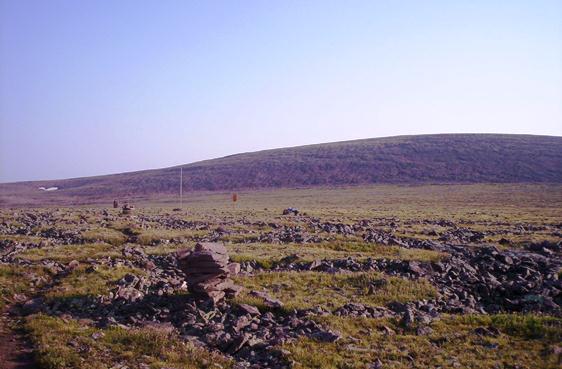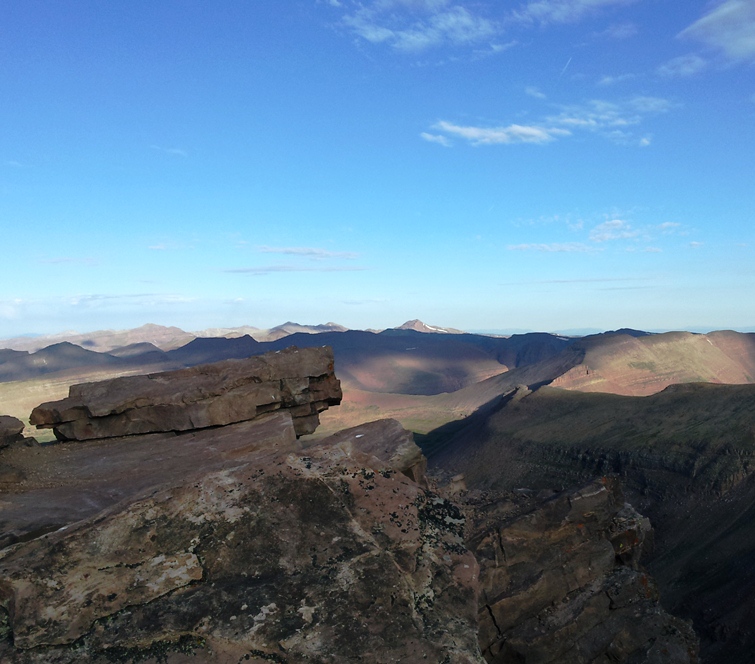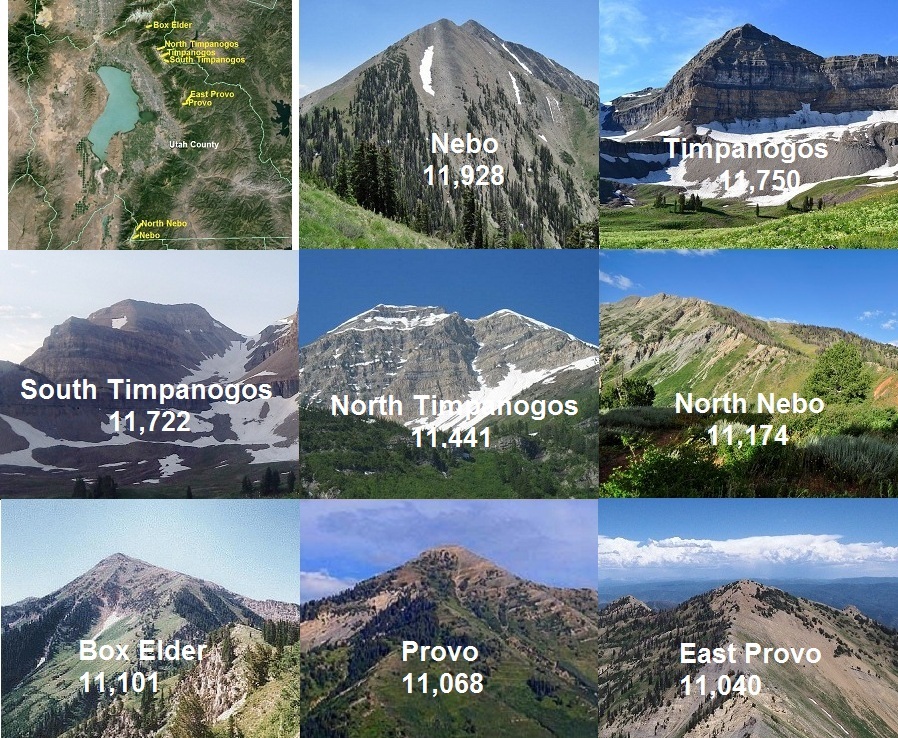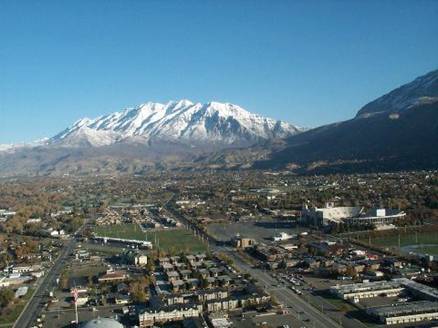During my 30,000 miles of running between 2004-2014 there have been some very tough moments. Much of these rough miles were self-induced, caused by being ill-prepared. Other times were just due to unexpected events during races and adventures. Tough times are part of the sport and hit us all. The key is knowing how to overcome tough spots and working through the challenges to run another day. This collection of short stories are some of the hard moments I ran into on the trails.
2009 Bighorn 100
It was June 20, 2009 in the Bighorn Mountains in Wyoming. During a chilly night I was slogging through marshes at about mile 55 in the Bighorn Mountains. I was in terrible pain. I was seeking for my 24th 100-mile finish and my 4th Bighorn 100 finish. But I had decided to quit. I couldn’t understand why my feet were in such terrible pain. (Much later I would figure out that the shoes I was wearing were sized way too small.) I needed to stop that pain. My decision was firm, but I was still eleven miles away from a viable dropping-out point. So I continued slowly. This wasn’t fun. Friends caught up to me, gave me comforting words, asked if they could help, and then went on.
At mile 60, I took some Advil and soon the swelling went down. I felt much better and started to run fast again. I began to have an internal debate in my mind whether to change my mind about quitting. Well, this better feeling only lasted a half hour. The swelling increased again and I slowed back down and continued to plod along. I shouted out loud, “Why do I do this to myself?”
I finally reached the Footbridge aid station at mile 66. It had taken me nearly seven hours to cover that past 18 miles. Morning had arrived and I told the volunteers that I would “probably” be dropping out. Why did I say “probably?” They brought me my drop bag and I just sat down with it and slowly ate. I watched runners who were behind me arrive. They all looked tired, but still had a determined look in their eyes as they went about their tasks. I watched them carefully and finally something triggered in my mind. Perhaps it wasn’t over. I slowly started to work on my feet. I changed into different shoes that fit much better. I had 34 miles to go and still had 13 hours to go. “It’s possible,” I told myself. I said to the volunteers, “I’m going to try to go on, but I’ll probably be back.”
I didn’t return, but within ten miles I again decided firmly to quit. But at the next aid station (mile 77), the captain wisely said, “Why don’t you sit and eat for a few minutes and then decide.” After eating some greasy bacon my energy and determination returned. With about eight miles to go an aid station volunteer said, “I have seen at least a couple runners who have looked worse than you.” I did finish in 33:21, one my slowest 100-mile finished ever, but I did finish. What I learned from this experience fueled me to finish the next 30 100-milers in a row without a DNF.
2003 Highline Trail
Dusk arrived as I watched the terrible snowstorm finally hit me. Now I was in deep trouble at about 12,200 feet, on North Pole Pass in the Uinta Mountains of Utah. I was still a rookie endurance hiker who had not even heard about ultrarunning yet. I foolishly thought I could fast-pack the rugged 60-mile Highline Trail solo end-to-end in about 30 hours. Those 30 hours had come and gone and I was now just about seven miles from my starting point and in big trouble.
I had made mistake after mistake. Things went well in the beginning, a day earlier starting from Chepeta Lake to the east. By dusk I had traveled westward nearly 30 miles to Yellowstone Basin. But then my cheap headlamp went dim. I searched for replacement batteries but found none. For several hours I would switch the light on and off, trying to cross the basin by moonlight. But then the moon went down. I had waypoints in my GPS, but they were each one mile apart and I continually lost the trail. My travel pace slowed to one mile per hour. Finally I had to stop for the night. At least I was smart enough to have a tent and a sleeping bag. At first light after very little sleep I decided to turn back and return to my car at Chepta Lake. I suffered all afternoon in a four-hour downpour of rain that drenched me to the skin. My GPS stopped working and I wasted an hour going up a wrong pass. I figured out my mistake, back-tracked but knew it would be impossible to get out of these mountains by dark. I pushed as hard as I could but then the weather turned really bad.

On North Pole Pass, the wind was now ferocious and the snow stung against my face. My wife expected me home tonight. I had no cell coverage, no working flashlight, no working GPS, cold and wet, and now I again kept losing the trail. I stumbled down the switchbacks on the east side of the pass and it became darker and darker. I lost the trail and finally understood that I would be spending another night in the Uintas. Through the snow and wind, I could just make out a giant rock. I scrambled to the wind-protected side of the rock, roughly set up my tent and got out of my wet clothes. Restless sleep finally arrived as I contemplated all the mistakes I made to get into this predicament. Morning came bringing brilliant sunshine and rising mists as the mountain terrain dried out. I arrived back safely and had many new lessons to contemplate.
2006 Grand Canyon R2R2R2R2R (quad) crossing
The rain was stopping and the skies clearing as dusk approached. With the light decreasing, my eyes started to do funny things. Perhaps the sleep deprivation contributed, here on my fourth consecutive crossing of the Grand Canyon. I started to see all sorts of objects in the canyon. First I swore I saw a water tank ahead near the trail. I had never remembered seeing one there before. When I got closer, it was just a big rock. Next I saw a large building with windows. It looked like a pumping station. Again as I got closer, it turned out to be a massive rock with some water stains on it the shape of windows. I thought I saw hikers ahead. Those turned out to be rocks too. It was driving me crazy. Finally I just averted me eyes to the trail so I wouldn’t go batty.
This was one of the toughest moments of my running career. I had decided to run 100 miles in the canyon by running four consecutive crossings and adding miles along the way on the rim and the Tonto Trail. The adventure was grueling. I was now faced with the final massive climb up to the North Rim. The last seven miles climbed 4,200 feet for a total of about 22,000 during my adventure.

It was now a death march. I concentrated on just keeping up a steady pace. I wasn’t going very fast, but I kept on moving. This was the first time during a run that I had faced a second night. I was very anxious to finish. With two miles to go a cold and steady rain fell. I noticed that I was starting to lean to the left over and over again. I stayed to the right of the trail so I wouldn’t fall over a cliff into the canyon. As the rain fell, I noticed several times little mice that would run ahead of me on the trail. I was so tired that it fascinated me to chase them. My mind was turning into mush.
Finally I reached the last switchback. I let out a cheer. I was almost there. I podded on, up and up and then stumbled out into the parking lot, making my way to my car at about 10:30 p.m. I had finished! One of only five people to have accomplished a R2R2R2R2R2R.
2012 Rocky Raccoon
No doubt, something was seriously wrong with my right leg/knee. But all I had left was 10 miles to finish my 5th Rocky Raccoon 100 and earn that coveted 500-mile jacket. I was now using my trekking poles like crutches. Running was impossible. Morning had arrived. I had hoped to break 20 hours this year, but that mark had passed five hours ago. I sat down on a stump and the terrible pain calmed down. I had never experienced such pain before during a race. I had promised myself that I would stop if my knee started to swell up and now it was starting to swell. Good friend Matt Watts finally caught up to me, joked with me and told me how bad I looked. I explained my problem, but I was still determined to go on and he wished me well.
About six weeks earlier at about mile 130 of Across the Years, in the 48-hour race I felt confusing pain in that leg. I was trying to defend my championship of the year before when I had covered 187 miles for the win. I had been cruising well with about an eleven-mile lead on my closest competitor, good buddy Tom Jackson. Now my race was crumbling. Something was wrong and I couldn’t figure it out. I thought it was just a muscle pull in the leg. The heat of the afternoon also started to slam me. Eventually I needed to take some long rests.

At mile 150 during the second evening, Tom caught up to me and we ran a couple miles together on the one-mile loop. I knew my win was gone so I stopped for a long 4.5-hour rest. Late that night I returned to the course and Tom was off sleeping somewhere. Could I catch up? The leg felt better and I was running fast again. But eventually I saw Tom ahead. I was at 157 miles and he was at 172. It would be impossible for me to catch him. I ran for a while together but then the leg hurt again and I slowed. I would block out the bad pain and finish strongly in second place with 174 miles. But later that day at the airport I could barely put weight on my leg for more than 100 feet.
For the next six weeks I rested and the odd leg pain decreased. I decided that I would wait to go get it checked out until after running Rocky Raccoon 100. A week before the race I felt very little pain but during the first mile of the race it returned. Progressively the pain became worse. Soon I could only manage a 10-minute pace, and later only a 12-minute pace. By mile 60, I took out the trekking poles. By mile 90 I knew something was seriously wrong but I limped on and eventually finished in 28:23, my slowest Rocky Raccoon ever. That was the most painful run I had ever experienced. But I earned that 500-mile jacket! At the airport I couldn’t walk this time and checked my pride at the door. Someone offered me a wheel chair and I accepted.
For the next two months, doctors fumbled around with poking, prodding, x-rays, and even an MRI. They thought it was just a soft tissue over-use injury. But I wasn’t getting better and was even on crutches for a couple weeks. Finally I convinced my orthopedic surgeon that I probably had a stress fracture and that the MRI had not looked low enough. He pulled out the image, looked closer and agreed. A bone scan showed the true story. I had a massive stress fracture across my tibia that went through front and back, a few inches below my knee. It probably started during Across the Years, and then during Rocky Raccoon, it continued to facture more and more throughout the race. It was a long healing process, but six months later, I finished Cascade Crest 100. That was a tough running moment, running 100 miles on a broken leg.
July 4, 2014 – Provo Peak, East Slope.
I was holding on but starting to slip. If I could just move another five feet across this steep scree slope, I would make it across the most dangerous spot. Above me a backpacker had been looking down, wondering who this crazy guy was, off route, in running shorts on this steep slope all alone. I looked down the steep slope. This wasn’t going to end up well. Every move caused more slipping. My shoes were really having trouble gripping the slope. My fingers were aching from gripping rocks. I had to finish getting across. I made the next move and my feet slipped again. I said to myself, “Here we go!” I started heading down. 5, 10, 15, 20 feet, sliding down the slope with sharp rocks ripping into my arms as I tried to halt the fall. Finally after about 20 feet my grip worked and my slide stopped. I rested and then the cramps started. After all, I had been running and climbing for the past ten hours on this crazy adventure.
I had in my mind to climb the eight highest peaks in my county, all above 11,000 feet, in less than 30 hours (including driving between the trailheads). It would be the toughest adventure of my running career thus far, 22,000 tough feet of climbing in 40 miles. I had bagged the first four peaks (Nebo, North Nebo, Provo and East Provo Peaks). East Provo Peak proved to be a difficult peak to get to because of a sleep slope. I thought it would be easier taking another route. It wasn’t. The sun was descending and I knew I had to get back up and over Provo Peak to my car before dusk.
I finally decided to abort my “easier route” and return to a scary route mentioned in various peak bagger reports. But to get over there, I had to cross a crazy steep slope with very loose rocks. I was really beat up from previous falls but kept pushing ahead. Finally I slid down and feared that I would really be beat up. But I stopped the slide and then very carefully continued on and back up to the top of Provo Peak. Back on track I was still determined. Later that night I also bagged North Timpanogos but by morning had blisters forming and felt too beat up and called it quits. I still had no doubt that in the near future I would still conquer all eight peaks in a little more than a day.
2006 Quint Timpanogos
Memories of a question a guy asked me six hours earlier on my 4th trip went through my mind. “Why are you doing this?” My reply was, “To set a new record.” He shook his head and said, “What kind of record it that, a record for the criminally insane?” I couldn’t argue with that logic and had just continued on.
Now I was on my 5th trip up the mountain on a quest to be the first person to accomplish five consecutive Mount Timpanogos summits. I had been going at this for nearly 22 hours and was nearing 22,000 feet of climbing on my adventure going up and down and up and down . . . Mount Timpanogos (11,749 feet), the most popular hiking trail in Utah.
This was a tough moment. I felt very low in energy but was still pushing a pace that was passing day hikers on the trail. Hikers coming down stopped to ask me, “Are you the guy doing five summits?” I would grin and admit to the crime. News was spreading up and down the mountain. When one guy stopped, he pulled out his radio and said, “He’s coming up again and now he’s in a white shirt.” I ran into some scout leaders who had recognized me from the previous evening on my second trip. After they had seen me several times, they finally figured out that I was doing something pretty amazing. I stopped to talk to so many groups that my pace slowed, and I actually heard cheers along the way. These kind words perked me up and pushed me on. The final push to the summit was very hard but I finally made it. There was no fanfare at the top, just a couple people up there admiring the views. I quietly went into the summit hut and signed the register. I had accomplished my 5th summit at the 24:42 mark. I cheered quietly to myself and then started to head down. I had set a record that would be very tough to break. Others would try, but as of 2014, it has stood for eight years.
2013 Triple Kings Peak Attempt
“How stupid am I? I should know better than this!” I think to myself as I look out from my little protection among some rocks at about 12,000 feet on the slope of West Gunsight Peak, the cutoff route to Kings Peak, the highest point in Utah. I look across the valley and can’t help but be in awe of the blizzard of snow blowing horizontally across to my left. I shiver in my flimsy garbage bag over my short sleeves and running shorts. Despite the hundreds of miles that I’ve run in the Uinta Mountain, the unpredictable weather got me again. I thought, “maybe I am stupid, but not as stupid as those poor guys now hunkered down in rocky slots near the summit of Kings Peak at 13,000 feet.” I worried about those guys that I had warned who just couldn’t keep up with me.

I was on another crazy adventure. I was attempting to be the first person to run a triple Kings Peak, three consecutive summits, trailhead to peak and back, three times. I had attempted the same thing just one week earlier but quit after two trips. It bugged me all week that I had quit, so here I was again, trying again. My first trip went well, a 26-mile 8-hour round trip on tough trails. That had been my 13th lifetime Kings Peak summit. After a 30 minute stop at my car refueling I felt great heading up for the second trip.
This time, I kept watching the sky. The temperature dropped as I reached the final mile climb to the summit and I looked out to the west and saw terrifying dark thunder clouds heading toward me. I hesitated, put on my garbage bag, and decided to push as fast as I could to bag the summit. I had to stay on the east side of the ridge all the way up to avoid the fierce wind. I reached the top with winds of about 40 mph. and talked briefly with a guy sitting on top messing around with his gear. I commented that we needed to get down fast. I turned around and started to descend very fast. I warned another group that they should turn around.
On the way up, I had made mental notes of several boulder caves where I could hunker down if needed but I still had hopes to outrun the storm. At first others were following me, but they could not match my speed. Lightning could be seen and the thunder was loud. I reached Andersen Pass and now needed to run west for a mile across the flat exposed Andersen Basin. I looked up to Kings Peak summit and it was now being pounded by the dark clouds. There was no sign of the others coming down. They had stopped.
As I ran across Andersen Basin, the wind and sleet pounded my back, pushing me on. So far I was staying ahead of the storm. As I reached the grassy shelf above the cutoff, the storm caught up to me and I was now running in a blizzard of snow and 50 mph winds. I felt like kicking myself for getting into this predicament, without warm clothes and still 12 miles from the trailhead. I rushed on knowing that I could find some protection among the cliff rocks through the cutoff.
I sat in my protective crevice looking down to the Painter Basin trail and could see a scout troop struggling to make their way up and over Gunsight Pass. They looked like they were dressed well. The storm wasn’t easing up, so I decided to push on. When I reached Gunsight Pass I slipped and fell on icy rocks and a nice boy scout waiting for his troop offered to help me. I was fine and pushed over the pass, now protected better from the massive storm. I ran fast, again trying to stay ahead of the dark black clouds. The wind pushed my back for the next five miles as I ran by some campers struggling to protect their tents from the onslaught coming. Once I reached the forest, I knew I was fine but shaken. I decided to give up my quest for three trips. Even if the storm passed, I didn’t want to face icy boulders. A triple Kings Peak is still out there for someone to grab. In the meantime, I am still the only person to do a double, and I have accomplished that three times.
2014 Grand Mesa 100
“I need to stop and lie down, just for few minutes. If I don’t, it feels like I’ll pass out,” I tell my pacer David at about mile 92 of Grand Mesa 100 in Colorado. The early afternoon heat was killing me and I knew I was in early stages of heat exhaustion. This would be my 63rd 100-mile finish and I knew well when I was approaching bad situations. This felt bad. I collapsed by the side of the trail, breathing very hard, with a pounding heart rate, and didn’t even notice the numerous mosquitos biting me. I didn’t care, I just needed to cool down. I was in the middle of a long eight-mile stretch between aid stations without water sources on the edge of the largest mesa in the United States. Exposed fields between the trees felt so very hot and slammed me. I was so ready to be done with this race. “Why do I do this to myself?” I ask out loud. There was no reply from concerned David.
A year earlier, I also ran Grand Mesa 100 but by mile 60, a terrible rain storm hit and it rained hard for the next nine hours. I quit because I lacked proper rain gear and only a few hardy souls made it to the finish. I returned this year determined to get even with this course and finish. The night had been rough. Lately my stomach would shut down during races at altitude and this 10,000 foot high mesa caused plenty of puking during the night. I nearly quit several times but eventually recovered with very long rests in my crew car. At dawn, at mile 75, the aid station I was at was closing down and the final runner was approaching. I now felt fine and decided I would finish “this thing.” David and I ran off with great speed and I passed several runners over the next few miles.
But by mid-morning the hot sun came out and started to bake me. My 55-year-old body just didn’t do well running 100-mile distances in the heat. As we pushed on my pace slowed way down. I wanted to stop and rest in the shade but David pushed me on. I eventually convinced him that I had to stop or there would be bad problems. He gave me all the water he could offer and that was enough to start cooling me down more, inside and out. That eight-mile stretch seemed to go by so slowly. It was one of the hardest stretches of my long 100-mile career. Eventually we passed by a small lake. I had David drench my shirt and hat which worked well to finally cool me down. When we reached the final aid station, I felt better but for the next three miles faced another battle, clouds of mosquitos! I kicked myself for rejecting being sprayed, thinking I would run fast enough to avoid their bites. But I made it, finishing in a very slow 32:11. Many runners didn’t make it that far. I finished in 11th place.







